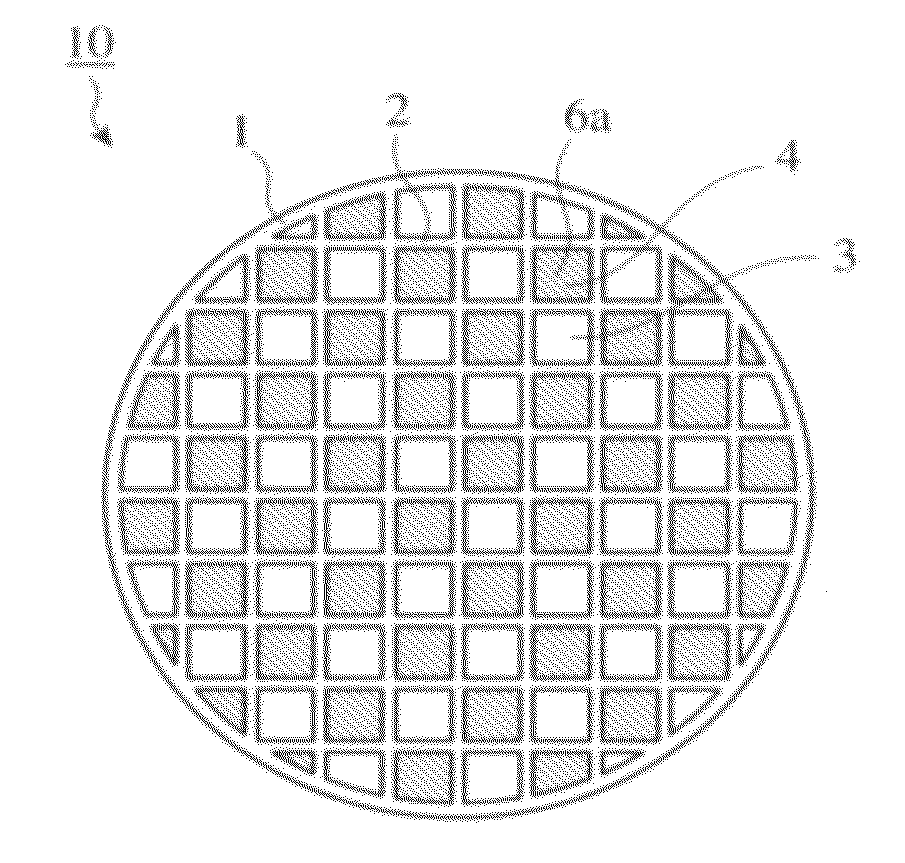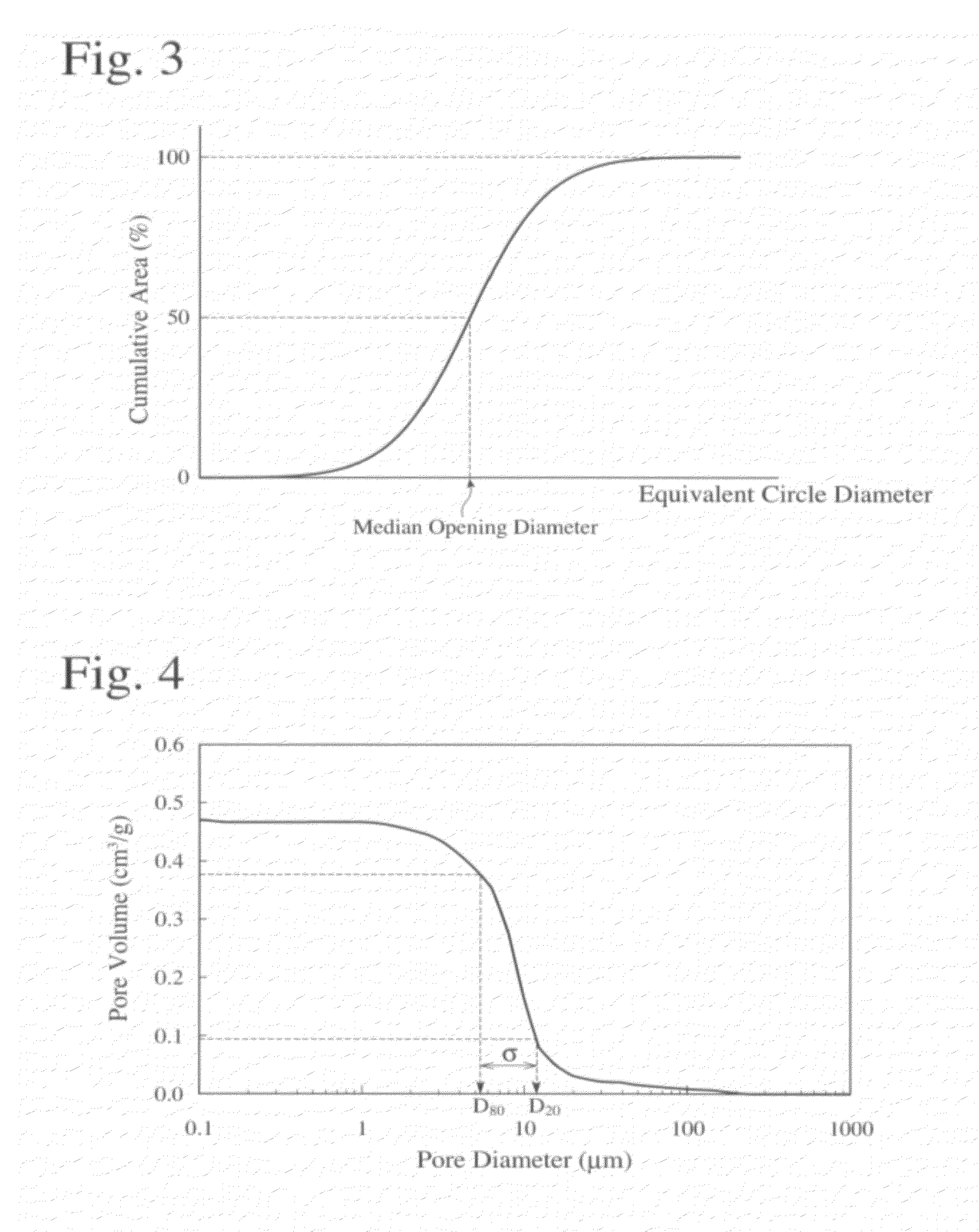Ceramic honeycomb structure and its production method
a honeycomb and honeycomb technology, applied in the field of honeycomb structure, can solve the problems of increased pressure loss, insufficient, adversely affecting humans and environment when discharged into the air, etc., and achieve the effect of suppressing pressure loss increase and improving pm-capturing ratio
- Summary
- Abstract
- Description
- Claims
- Application Information
AI Technical Summary
Benefits of technology
Problems solved by technology
Method used
Image
Examples
Embodiment Construction
[0045][1] Ceramic Honeycomb Structure
[0046](1) Structure
[0047]The ceramic honeycomb structure of the present invention has a large number of flow paths partitioned by porous cell walls,
[0048]the cell walls having porosity of 40-60%;
[0049]pores opening on the cell wall surface having an opening area ratio (the total opening area of pores opening on the cell wall surface per a unit area) of 15% or more;
[0050]when the opening diameter of each pore opening on the cell wall surface is expressed by an equivalent circle diameter (a diameter of a circle having the same area as the opening area of each pore), the median opening diameter of the opening pores being 10 μm or more and less than 40 μm;
[0051]the density of pores having equivalent circle diameters of 10 μm or more and less than 40 μm being 350 / mm2 or more; and
[0052]the average circularity of pores having equivalent circle diameters of 10 μm or more and less than 40 μm being 1-2.
[0053]With such structure, the ceramic honeycomb struc...
PUM
| Property | Measurement | Unit |
|---|---|---|
| porosity | aaaaa | aaaaa |
| median opening diameter | aaaaa | aaaaa |
| median opening diameter | aaaaa | aaaaa |
Abstract
Description
Claims
Application Information
 Login to View More
Login to View More - R&D
- Intellectual Property
- Life Sciences
- Materials
- Tech Scout
- Unparalleled Data Quality
- Higher Quality Content
- 60% Fewer Hallucinations
Browse by: Latest US Patents, China's latest patents, Technical Efficacy Thesaurus, Application Domain, Technology Topic, Popular Technical Reports.
© 2025 PatSnap. All rights reserved.Legal|Privacy policy|Modern Slavery Act Transparency Statement|Sitemap|About US| Contact US: help@patsnap.com



